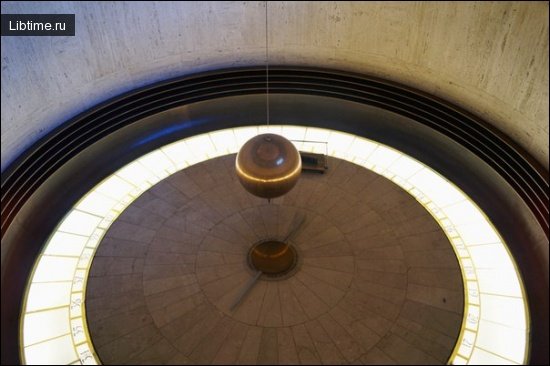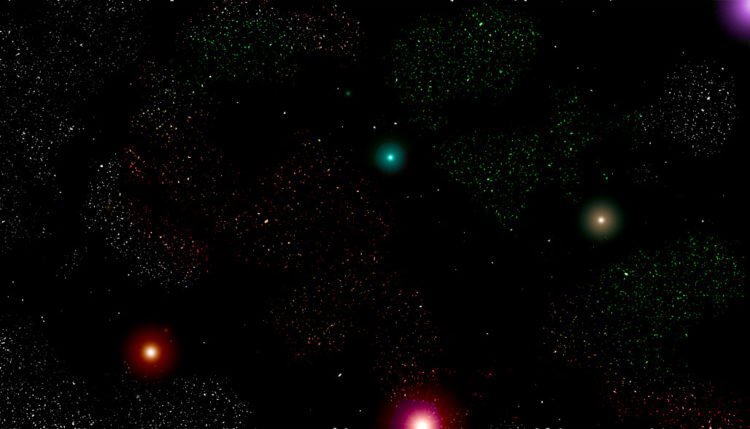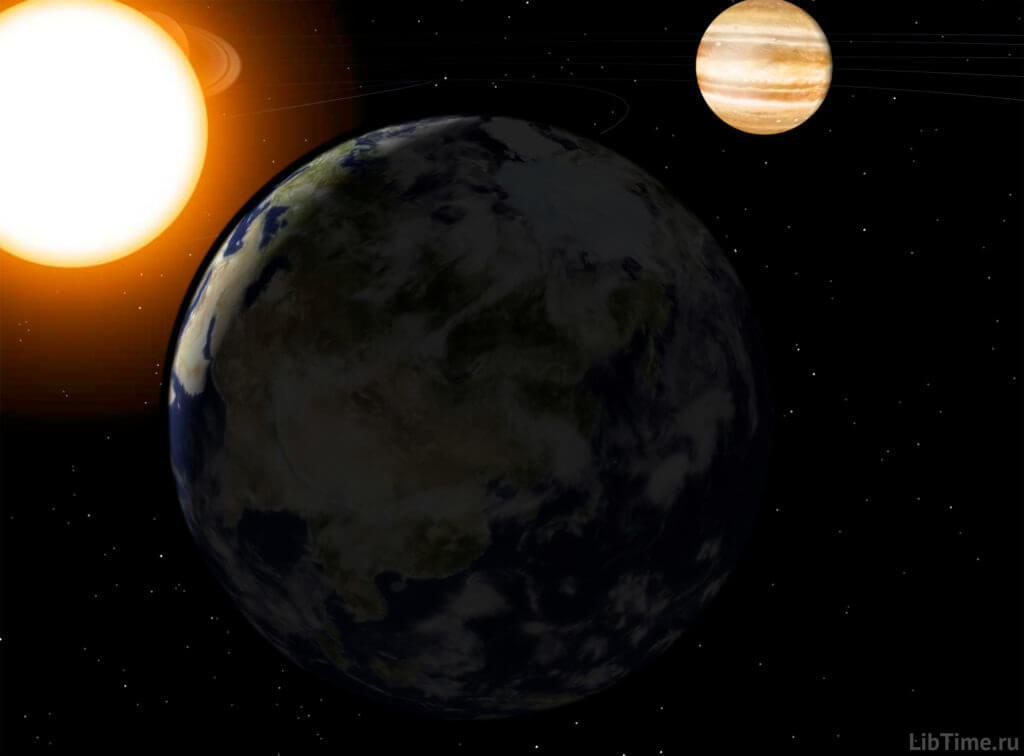The first hypotheses about the existence of the universe
Cognition of the world around us was formed gradually. For a long time, scientists have been making various guesses about the origin of the world, but only after the brilliant discoveries of Copernicus, Galileo and especially Newton did scientifically sound assumptions, or otherwise - the first hypotheses about the existence of the Universe- appear.
Discoveries of Nicolaus Copernicus
The great Polish scientist Nicolaus Copernicus (1473-1545) revolutionized astronomy with his discoveries . As a result of thirty years of hard work, using very simple instruments, he came to the conclusion that the Earth is not the center of the universe, but an ordinary planet and that it rotates with the other planets around the Sun.
Copernicus' discovery raised the prestige of science high. However, as the "Copernican heresy" became increasingly recognized, so did the anger of the Catholic Church.
Copernicus' work, as well as all works exposing his teachings, were placed on lists of forbidden books. The decision of the Church's censors stated:
To assert that the Sun stands motionless at the center of the world is an opinion ridiculous, false from a philosophical point of view and formally heretical, since it contradicts sacred scripture. To assert that the Earth is not at the center of the world, that it does not remain stationary and possesses even a daily rotation, is an opinion equally ridiculous, false from a philosophical point of view and sinful from a religious point of view.
Anyone who expounded and defended Copernicus' discovery was persecuted and severely punished.
Galileo Galilei's discoveries
The great Italian scientist Galileo Galilei (1564-1642), an astronomer and physicist, was a dedicated follower of Copernicus' work. He laid the foundations for the scientific study of nature and, with the help of a homemade telescope, revealed the true picture of the world. 
First of all, Galileo Galilei discovered mountains on the moon and thus established that there were no longer such profound differences between the terrestrial and the celestial.
The telescope, although very weak, still allowed Galileo Galilei to prove that Venus, like the Moon, changes its face. Hence, it follows that it shines reflected light from the Sun and revolves around him, not around the Earth, as previously claimed.
Galileo not only saw on the Sun spots, but even concluded from the apparent movement of spots that the Sun rotates on its axis. "The Sun is spinning!" and the Milky Way is a huge cluster of stars. Galileo's scientific discoveries greatly expanded people's knowledge of the size of the universe.
Anyone could be convinced of the correctness of what the scientist was proving by looking through an astronomical tube. Now it was already difficult to defend the Ptolemaic system of the structure of the world.
Scientist Claudius Ptolemy
The Alexandrian scientist Claudius Ptolemy, who lived in the 2nd century AD, i.e. about 1,500 years before Copernicus, considered the Earth to be the fixed center of the world. In this regard, it is interesting to cite a humorous poem by Lomonosov, in which he vividly conveys how the cook convincingly resolved a heated dispute between two scientists. Of them, "one was Copernicus, the other was known Ptolemy". The cook gave this answer:
...that in that Copernicus is right, I will prove the truth, on the Sun not having been: Who has seen a simpleton of cooks such a one, Who would spin the hearth around the roast.
Galileo's opponents were particularly alarmed by his discovery of four satellites of Jupiter, orbiting around the planet in the same way as the Moon orbits around the Earth, (more: Representation of the shape of the Earth).
With this Galileo finally refuted the pious speculations of the church fathers that only the Earth is the center of motion of the heavenly bodies. The Church, especially the Catholic Church, has always dealt decisively with its enemies. Galileo had shaken its hitherto unshakable foundations.
He had more and more adherents. So he's a dangerous enemy. He must be removed. And the seventy-year-old elder was sentenced to life imprisonment for his assertion of the Copernican heresy. After forced repentance, the dreaded church prison was replaced by a lifetime of house arrest.
The teachings of Isaac Newton
No less great is the role in the knowledge of nature of the greatest physicist and mathematician of the XVIII century, the English scientist Isaac Newton (1643-1727). His discovery of the law of universal gravitation explained not only the motion of the planets and their satellites, but also many other natural phenomena.
It became clear, for example, that the Moon could not fly into the world space or fall to the Earth, as fall heavenly stones - meteorites, because the Moon is held by gravity. The law discovered by Newton, obeyed not only the planets of our solar system, but also other luminaries outside it. That is why Newton's law is called the law of universal gravitation.
Immanuel Kant's hypothesis
Having solved the mystery of the movement of the planets, man seeks to learn how exactly the world in which he lives arose. 
The first attempt to understand this complex question belongs to the famous German philosopher Immanuel Kant (1724-1804). Kant based his hypothesis on the development of nebulae.
Nebulae
Nebulae are celestial luminaries that are not sharply delineated. Even in a telescope they appear as a hazy spot. Most nebulae are spiral-shaped - twisted like a spiral. In addition to light, observed and dark nebulae, black spots, or coal bags.
Nebulae are also divided into dust, gas and star nebulae. Kant believed that the solar system originated from "chaos" - from a huge accumulation of disorderly moving particles and formless matter. In Latin, this is the substance from which all the nature around us was formed.
The core of such a meteorite swarm formed the Sun, and the individual dense parts served as centers around which other, lighter ones began to cluster. That's how the planets came to be. These conclusions seemed to be confirmed not only by the rotation of the planets in the same direction from west to east, but also by the fact that the planets are in the same plane.
Kant correctly regarded the Milky Way as one of the great nebulae. The universe in his understanding represents an eternal alternation of origin and death. Only forces inherent in matter itself are the driving force here. In this connection, Kant had a bold idea for his time:
Give me matter and I will build the world.
The Kant-Laplace hypothesis
Kant's contemporary, the outstanding French mathematician, physicist and astronomer C (1749-1827) supplemented and refined the theory of the origin of the universe, which received the name of the Kant-Laplace hypothesis. He established the successive development of a huge gas nebula extending beyond the orbit of the outermost planet.
In the center of the rarefied mass of the nebula, according to Laplace, there was some thickening, from which the Sun developed. The nebula possessed at first a uniform motion. As it cooled, it shrank, taking on a lentil shape.
The speed of rotation due to compression increased. The centrifugal force also increased, especially at the equator. As the centrifugal force increased further, exceeding the gravitational force, gas rings separated one by one in the equatorial part of the nebula.
The rings then disintegrated and reassembled into secondary nebulae. From these, the planets and their satellites were formed. The brilliant hypothesis attracted widespread attention and was talked about everywhere. Due to its simplicity and persuasiveness, the Kant-Laplace hypothesis enjoyed a wide spread for over one and a half hundred years.
Gradually in connection with the development of scientific knowledge begin to reveal some shortcomings of the hypothesis, for example, how to explain the reverse rotation of the satellites of some planets, very controversial, in addition, the separation of the rings in the compression of the nebula and the further formation of planets.
Even more objectionable is the formation of the Sun after the separation of the planets. There are other objections related to the mathematical calculations underlying this hypothesis. Besides it, there were many other hypotheses. We have no opportunity to dwell on them.
The hypothesis of O. Y. Schmidt
Those objections, which caused these hypotheses, prompted Academician O. Yu . Yu Schmidt (1891 -1956) original idea about the formation of our solar system in a completely different way.
Since ancient times, the attention of astronomers attracted the dark spots of the Milky Way - coal bags, representing an accumulation of meteor dust and meteorites themselves of various sizes. These impressively sized dark clouds cover the stars that lie behind them.
When through such a dark cloud passed the Sun, it, as suggested by Academician O. Yu Schmidt, carried away a mass of dust particles and meteorites, and they began to revolve around the Sun in elongated orbits. Colliding with each other, meteorites and dust particles clumped together into giant clumps - the embryos of planets.
These clumps, attracting new meteorites, increased in volume. A huge amount of meteorites and dust was absorbed by the Sun itself, why the closest to it - Mercury, Venus, Earth and Mars - are not distinguished by significant size. 
Although the hypotheses of the origin of the solar system are quite sufficient, however, none of them is not generally recognized.


